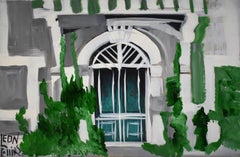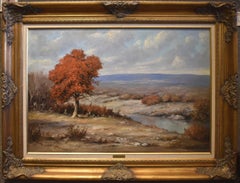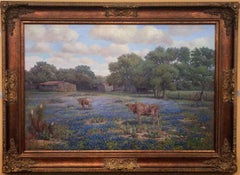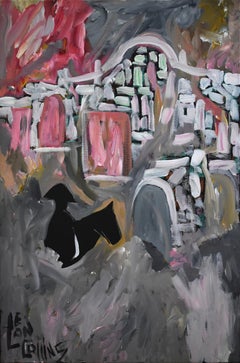San Jose Art Pottery Tiles"SCENIC ART TILE TABLE" San Jose Pottery San Jose TileCirca 1940s
Circa 1940s
About the Item
- Creator:San Jose Art Pottery Tiles
- Creation Year:Circa 1940s
- Dimensions:Height: 21 in (53.34 cm)Width: 33 in (83.82 cm)Depth: 21 in (53.34 cm)
- Medium:
- Movement & Style:
- Period:
- Condition:Very Nice Condition. Please view our 1stdibs storefront to view other Vintage Texas Items.
- Gallery Location:San Antonio, TX
- Reference Number:1stDibs: LU76935808212
You May Also Like
2010s Impressionist More Art
Ceramic, Stoneware
1880s Impressionist More Art
Earthenware, Glaze
Artist Comments
Two women dressed in vintage attire appear to be in conversation in the middle of a vineyard. Long, warm shadows give depth and dimension to the scene. The calm...
21st Century and Contemporary Impressionist More Art
Oil
Artist Comments
A peaceful bay stretches along an Irish countryside, where the hills slope down to meet the soft curve of the shore. Bold strokes and earthy colors capture the ...
21st Century and Contemporary Impressionist More Art
Acrylic
Artist Comments
Quaint houses line a quiet alleyway, where overgrown weeds and trees bring a sense of life. Warm tones and impressionistic strokes add charm throughout. In this...
21st Century and Contemporary Impressionist Interior Paintings
Acrylic
Artist Comments
Various shades of green hint at an abstract landscape. It depicts a marsh with scattered pools that reflect the colors of the sky. Artist Janet Dyer painted the...
21st Century and Contemporary Impressionist More Art
Acrylic
Artist Comments
A young boy walks his dog along a path near a beach in France. Impressionistic strokes add movement and energy to the foliage. The bright summer sun bathes the ...
21st Century and Contemporary Impressionist More Art
Acrylic
Late 19th Century American Impressionist Landscape Paintings
Canvas, Oil, Board
Early 20th Century American Impressionist Landscape Paintings
Oil, Board
1980s American Impressionist Still-life Paintings
Oil, Panel
More From This Seller
View All21st Century and Contemporary Impressionist Landscape Paintings
Acrylic
20th Century Impressionist Landscape Paintings
Oil
2010s Impressionist Landscape Paintings
Oil
21st Century and Contemporary Impressionist Landscape Paintings
Acrylic
2010s American Impressionist Landscape Paintings
Oil
1970s Impressionist Still-life Paintings
Oil



